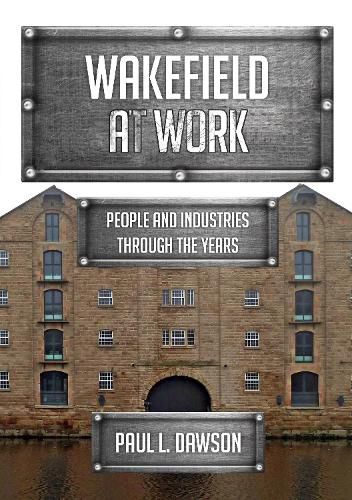Readings Newsletter
Become a Readings Member to make your shopping experience even easier.
Sign in or sign up for free!
You’re not far away from qualifying for FREE standard shipping within Australia
You’ve qualified for FREE standard shipping within Australia
The cart is loading…






Wakefield was a prosperous market town in the Middle Ages, but it was transformed by coal mining during the Industrial Revolution. Mining dominated the local economy until the last pits closed in the 1970s and 1980s.
Trade in cloth and cloth finishing were also cornerstones of Wakefield’s economy, drawing in merchants from across the north. Local families - the Milnes’s and the Naylors - dominated the trade until the economic depression of the 1820s and increasing mechanisation. Cloth production started on a small scale and many houses in the area had a weaving shed until the arrival of the first steam-powered mill in 1781 and the rapid expansion of fulling and scribbling mills in Wakefield.
Yarn spinning was more successful, and the huge Plumpton Park complex on Westgate became the largest employer in the town. Heavy industry also came to Wakefield. Steam engines were constructed at Fall Ing Foundry from 1791 and the railways became a major employer. Greens Economiser Works were a major concern until the 1960s.
The city has been transformed once more, with the major employers today being warehouse distribution bases, retail parks and shopping outlets. Wakefield at Work explores the working life of this Yorkshire city and its people, and the industries that have characterised it. The book will appeal to all those with an interest in the history of Wakefield.
$9.00 standard shipping within Australia
FREE standard shipping within Australia for orders over $100.00
Express & International shipping calculated at checkout
Wakefield was a prosperous market town in the Middle Ages, but it was transformed by coal mining during the Industrial Revolution. Mining dominated the local economy until the last pits closed in the 1970s and 1980s.
Trade in cloth and cloth finishing were also cornerstones of Wakefield’s economy, drawing in merchants from across the north. Local families - the Milnes’s and the Naylors - dominated the trade until the economic depression of the 1820s and increasing mechanisation. Cloth production started on a small scale and many houses in the area had a weaving shed until the arrival of the first steam-powered mill in 1781 and the rapid expansion of fulling and scribbling mills in Wakefield.
Yarn spinning was more successful, and the huge Plumpton Park complex on Westgate became the largest employer in the town. Heavy industry also came to Wakefield. Steam engines were constructed at Fall Ing Foundry from 1791 and the railways became a major employer. Greens Economiser Works were a major concern until the 1960s.
The city has been transformed once more, with the major employers today being warehouse distribution bases, retail parks and shopping outlets. Wakefield at Work explores the working life of this Yorkshire city and its people, and the industries that have characterised it. The book will appeal to all those with an interest in the history of Wakefield.